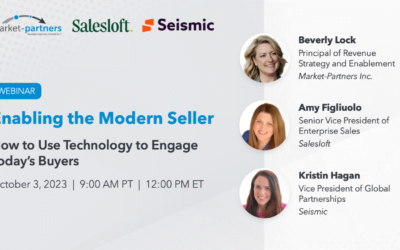In no uncertain terms, the game of the buyer-seller relationship has changed. As purchasing decisions have become increasingly complicated, no longer are customers buying based off value or affordable pricing alone. And with more information and choices, today’s buyers have all the cards in their hands – and this means the house won’t always win.
But even as customers hold much of the power in the evolved buyer-seller relationship, the discourse surrounding buying and selling is not changing fast enough. There is definitely more of an emphasis on the buying process, but it is too often from the internal view of the selling organization’s sales process. As a result, the idea of a “buying journey” is only being tossed around as a buzzword or used as a fresh coat of paint on outdated ideas. However, in the face of this stagnated dialogue, cutting-edge organizations are still capitalizing on the opportunity of directly and deliberately managing their customers’ buying journey. The rise of economists in Silicon Valley being a clear example of this practice.
Sounds strange, right? While most imagine economists pursuing research positions, an article from the Economist titled “Why economists are flocking to Silicon Valley” shows a future for these graduates in mapping the buying journey. The famously known tech capital is now attracting one in seven Economics PhDs in 2022 – up from one in twenty in 2018. Big tech is not only utilizing economists for their grasp of statistics, but as the author stated: for their “knack for understanding how incentives affect human behavior” as well as their ability to “identify causal relationships between variables.”
Putting this notion to test, the article highlighted Lyft, who hired economists to determine the price and wait tolerance of riders. Their new team ultimately discovered an evidence-backed dollar amount that rideshare users value their time at. The answer led to a new feature in the app called “Wait & Save,” where riders can choose a longer wait for a discounted fare.
Although price and time sensitivity are certainly economics questions, why I believe these economists are mapping the buying journey is in the motivations of the asker. What these Silicon Valley companies really want is for these economists to help them better understand how their buyers buy. They want to understand the choices, thought process, value drivers, and concerns surrounding the decision to ride or not to ride. Thus, the consensus that Lyft customer’s value their time at $19.00 an hour is, in part, mapping the buying journey.
Given the article and what we do, it should come as no surprise that some of our earliest clients described our research-based outlook on consulting as behavioral economics. Since then, we have also been referred to as ethnographic researchers, market phenomenologists, and by countless other fields of study. Yet more recently, when we say, “Market-Partners Inc. maps a client’s end-to-end customer buying journey,” people have a far better idea what we do without having to tie it to another concept. Call it whatever you like, but this way of thinking about business is infectious, and these investments into economists are proof the tides are slowly turning. The buying journey is now how modern organizations are looking to solve problems and find opportunities for growth.
Unlike the business strategies of yesterday, mapping the customer buying journey finally gives the house a chance to look at their buyers’ cards. The Economist may have featured a B2C service but leveraging the buying journey in organizations with complicated B2B offerings is arguably just as, if not more important for business success. B2B sales typically means more steps, key players, stakeholders, conflicting priorities, and competing agendas – creating a greater need to understand the market’s desires. The majority of approaches to selling these kinds of complex offerings do not consider the numerous factors in a buying journey and the way they change throughout. In no uncertain terms, we can no longer find the right person or call high, deliver a polished pitch, and hope everything falls into place. We must recognize the reality of how our buyers buy and meet them where they are.
Luckily, once the customer buying journey has been mapped, it becomes apparent that buyers, within a particular market, buy in remarkably similar ways. Organizations both B2B and B2C can then use these patterns as the foundation for repeatable sales, marketing, and business strategies for significant and sustained results. Enter: the economists in Silicon Valley. Like these companies with economics departments have discovered, understanding what is really causing buyers to make the decisions in their buying journey is critical for success in today’s business environment. An Outside-In™ approach, mapping and managing your market’s buying journey, means helping your buyers buy, giving both the players and the house a chance to win.




